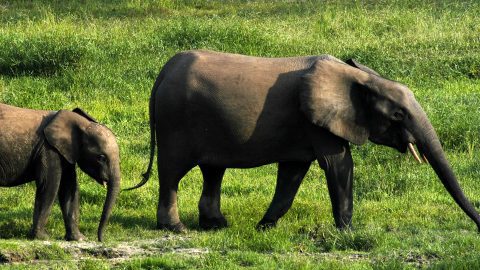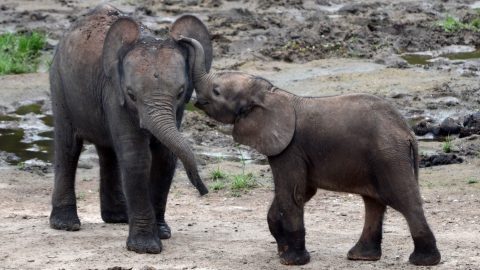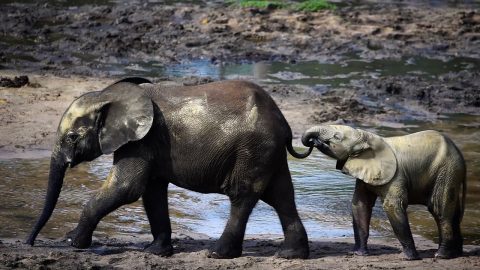Families
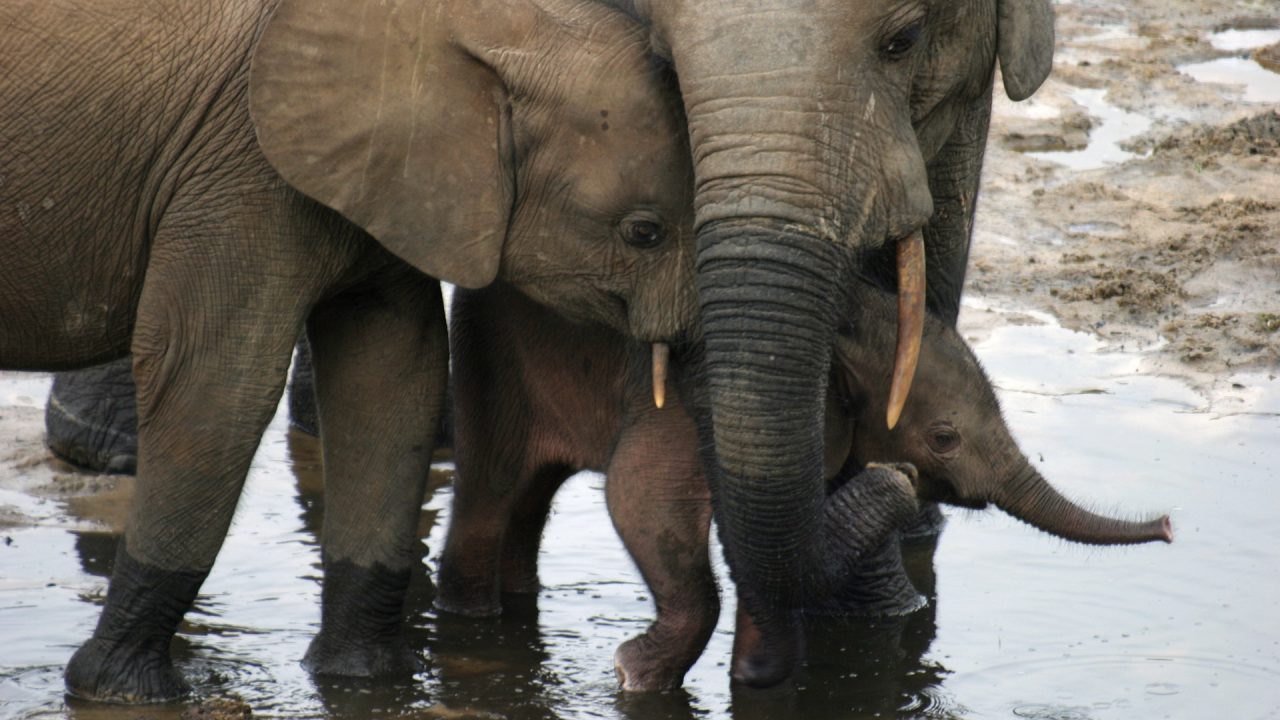
The family is the foundation
Families are at the core of all elephant societies, but the size and function of this most basic unit for forest elephants is only just beginning to come to light. Concealed by the forest canopy, they seem to search for food and resources in small groups, just a mom and her calves, but a more complex family structure emerges in forest clearings. How different are these elephants of the forest from the other, better known, elephant species?
What We Know About Families
The average forest elephant core family size consists of 2.8 individuals, comprised of a mother and her dependent offspring, but extended families can include as many as seven elephants. Young males form part of these groups until they disperse at around the age of 14.
Families usually visit clearings 2-3 times a year, for two or three days in a row (although some come more often). They often make these visits the same week and month, year after year.
Often it seems that subgroups of an extended family arrive at a clearing close together in time. But do these subgroups travel together in the forest or do they “share a plan” for when to meet at the bai? We still don’t know.
By the Bai – Glimpses of a Social System
The mystery of forest elephant society emerges through observations at forest clearings or “bais” (a local term for certain types of clearings). Here we see the extent of relationships maintained among a network of individuals much larger than the core family group.
Forest clearings like Dzanga provide the rare opportunity to actually observe forest elephants and their interactions with one another. Much of what we know about the social structure of forest elephants comes from observations of interactions at the Dzanga forest clearing by our colleague Andrea Turkalo. Her 27-year long observational study at Dzanga bai, and her familiarity with thousands of individuals, makes the site unique among the already limited few that have received long-term observations.
Elephant Society
Elephants have one of the most complex societies in the animal kingdom! This complexity is the result of their ability to recognize and track other elephants over long periods of time despite changes in age, status, and condition. Over their 65-year lifetimes, elephants develop multiple, many-layered social relationships that even account for individual personalities.
Generally, forest elephants appear similar to the better known savanna species in terms of female group interactions and male behaviors, but it is important to keep in mind the limits of our current knowledge.
Families come together at forest clearings where they re-establish bonds, meet new infants, and likely engage in many social interactions we have not yet identified. Males and females looking for mates might also be attracted to clearings. Males leave the family in early adolescence, after which their social activities consist mainly of competing for rank in male dominance hierarchies. Savanna elephant males spend considerable time roving among family groups in search of females. It is possible this also occurs in the forest elephant, but male forest elephants might instead depend on finding females at forest clearings.
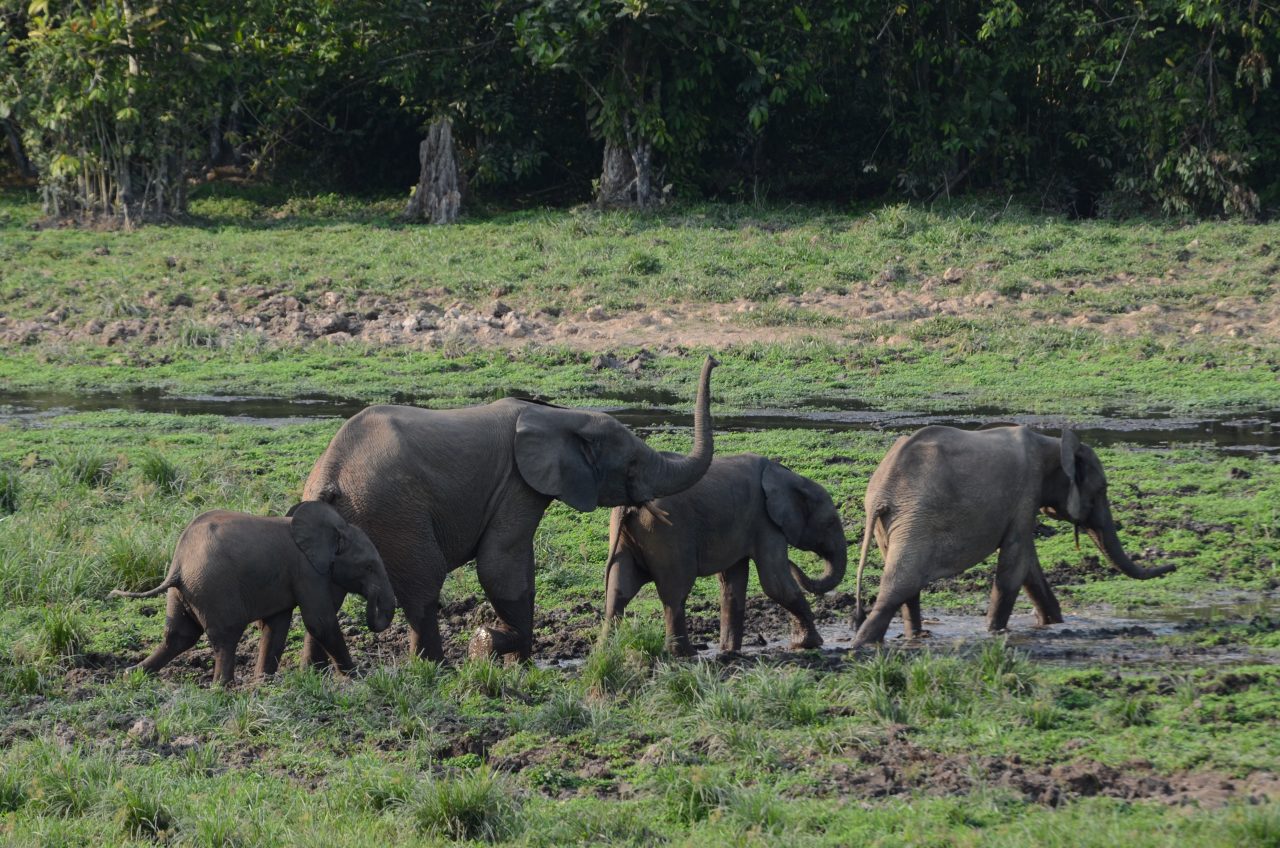
Adult bulls have no involvement in the care of young. Females, on the other hand, spend their lives immersed in a social network which encompasses many families and several levels of competitive and collaborative relationships. Communal care of young is a conspicuous feature of the female society and forest clearings have been an excellent place to observe this ‘alloparenting’ in action.
Forest Elephants
References:
Much of the information on this page comes from Katy Payne’s chapter in Animal Social Complexity, edited by F.B.M. de Waal and P.L. Tyack (2003).
also see: White, L.J.T., C.E.G. Tutin, and M. Fernandez. 1993. Group composition and diet of forest elephants, Loxodonta africana cyclotis Matschie 1900, in the Lope Reserve, Gabon. African Journal of Ecology 31:181-199.


